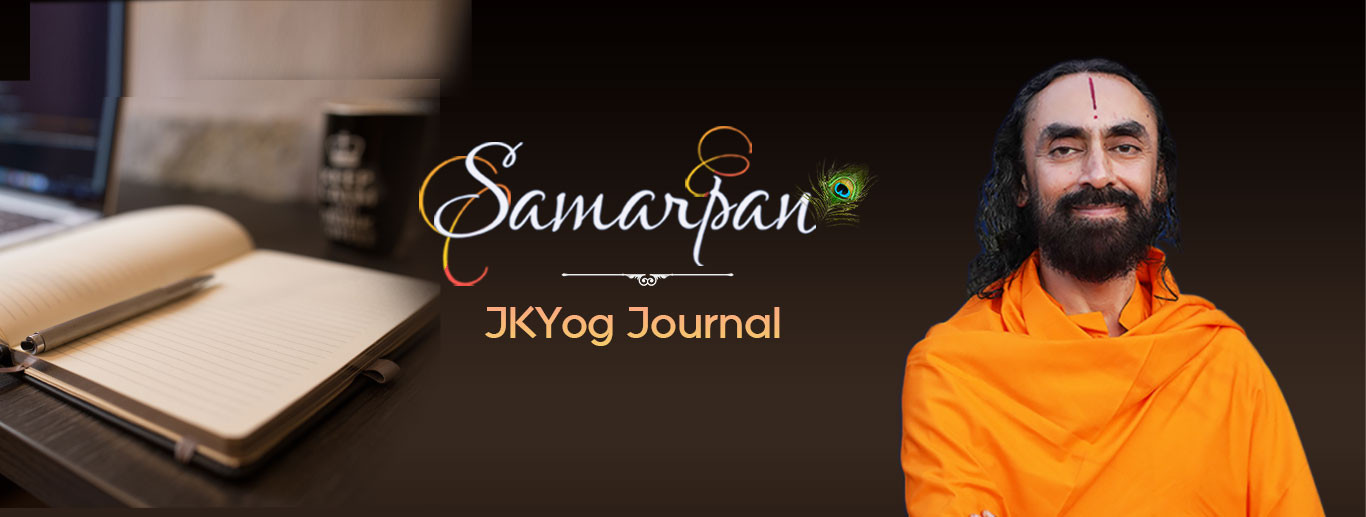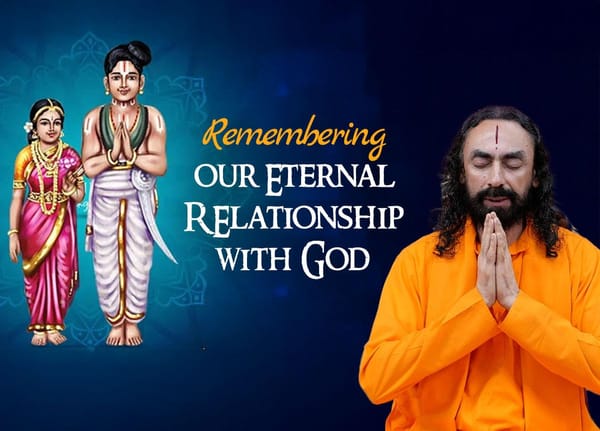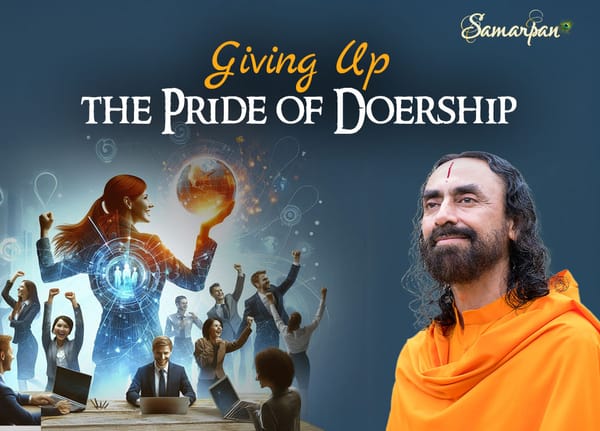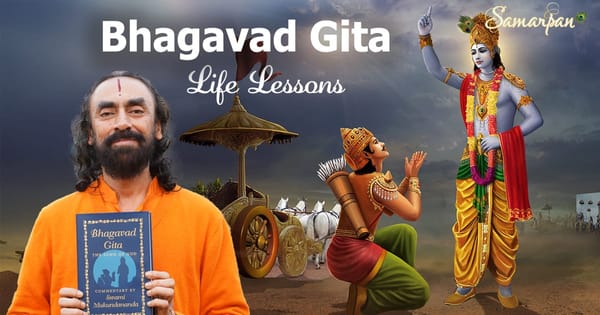
From the Editor’s Desk
Many spiritual aspirants in search of divine bliss, switch their goal from Mukti to Bhakti. Followers of Gyan Yog Marg aim for Mukti (or liberation from the cycle of birth and death) whereas those on the Bhakti Yog Marg aim for Bhakti (or Divine love and service to God). While both paths could lead to immense bliss, the bliss of the formless Brahm cannot be compared to the divine bliss of the personal and loving form of God.
This month, we make an attempt to present a very brief perspective on an otherwise extremely deep and intense topic. Swami Mukundananda has taught us the tatvagyan to help us understand the difference between bhukti, mukti, and bhakti, but we focus more on the choice between mukti and bhakti.

Vedic Wisdom & Application
Challenge of the Month
From Mukti to Bhakti
Reflection Questions
- What is the Difference between Mukti and Bhakti?
- Why should Souls Aim for Bhakti instead of Mukti?
- How can we Practice Sadhan Bhakti with our Material Tools?
If you randomly identify a cluster of people from any part of the world and ask them about their goal in life, it is very likely that their goal may fit into one of these broad categories – seeking material pleasures (i.e., bhukti), liberation from the cycle of life and death (i.e., mukti), or attaining the divine love of God (i.e., bhakti). A vast majority of the people tend to choose material pleasures defined by accumulation of wealth as a means to a lavish lifestyle. A minority of the population inclined toward spirituality, may choose either liberation or divine love. The purpose of this issue is to delve into these goals, briefly addressing bhukti, focusing more specifically on mukti (moksha) and bhakti.
The goal of bhukti has to do with one’s desire to find enjoyment from material or worldly things. Such pleasures are derived by accessing objects that satisfy the five senses – sight, taste, touch, hearing, and smell. Everything in the material world is subject to becoming the object of sensory pleasures. Possession and accumulation of such objects is often motivated by the desire for immediate access when one wants. People spend endless lifetimes in the pursuit of material wealth and objects of sensory pleasure, but the reality is that the desire for bhukti is insatiable. In fact, there is no end in sight because the pursuit of material goals does not lead to everlasting contentment. Yet, under the illusion of finding eternal happiness, people chase worldly pleasures, making bhukti the goal of life.
In the evolutionary cycle of life and death, when souls realize that Bhukti is just a mirage, they are motivated toward Mukti or Bhakti.
What is the Difference Between Mukti and Bhakti?
The five kinds of Mukti (or liberation) can be classified into two main categories: The first is associated with dualism where the individual soul remains separate from God, whereas the second is associated with non-dualism (i.e., sayujya, ekatva, kaivalya or moksha) where the individual soul becomes one with God. For the purpose of this article, we will use the term mukti to refer to the second kind of liberation noted above.
The goal of a spiritual aspirant desiring Mukti is to achieve the state of liberation where all thoughts are steady and perfectly aligned with the self as Brahm (i.e., Aham Brahmasmi) or the impersonal form of God. Typically associated with the Gyan Yog Marg, the followers desire freedom from sorrows of the world, and therefore, wish to get liberated from Maya. Upon attainment of mukti, their soul merges into Brahm eternally.
Bhakti (i.e., siddha bhakti, prema bhakti) or Divine Love is the highest power of God. Jagadguru Kripalu ji Maharaj reveals that “Love is the quintessential shakti of God.” The word 'Bhakti' comes from the root word, Bhaj, which means to serve. Thus, the noblest expression of love is the desire to serve God for His happiness. The path of Bhakti is associated with the philosophy where God and individual souls (i.e., jeev shakti) exist as independent and distinct realities.
The goal of a spiritual aspirant desiring Bhakti is to attain God-realization through exclusive (i.e., ananya), constant (i.e., nirantar), and selfless (i.e., nishkam) love for God. Narad ji reveals, “True love is for the happiness of the Beloved.”
तत सुख सूखीत्वं
tat sukha sukhitvam
(Nārad Bhakti Darśhan, Sūtra 24)
The aspirant practices sadhan Bhakti so that all thoughts and actions are performed for the pleasure of God and all types of outcomes (e.g., joyous or sorrowful) are perceived as His divine grace for the elevation of the soul. The question that arises is whether a spiritual aspirant should choose Mukti or Bhakti.
Why should Souls Aim for Bhakti instead of Mukti?
The soul is a tiny fragment of the divine energy of God. God Himself is Bliss and therefore, being a part of God, aiming for divine bliss is the constitutional nature of the soul. The soul will keep searching for infinite bliss until it finds permanent satiation.
There are several reasons for pursuing Bhakti over Mukti.
- Bhakti Provides the Highest Bliss of God-realization. The path of Bhakti Yog (i.e., Vishuddha or Raganuga Bhakti) leads to Premanand, while the path of Gyan Yog leads to Brahmanand. Premananda is the Divine Love Bliss of God’s personal form filled with sweet madhuris, whereas Brahmanand is the bliss of the impersonal form. One of the qualities of Bhakti is that it is mokṣhalaghutākṛita, meaning, it makes the happiness attained from liberation seem insignificant and not something worth pursuing. Narad ji states in the Narad Pancharatra:
hari bhakti mahadevyah sarvamuktyadi siddhayah
bhuktayashchadbhutastasya chetika vadanuvratah
The bliss of bhakti is such that even when the five types of liberation come and stand in front of the devotee, he does not acknowledge or accept them.
It is better to target a higher goal (i.e., Bhakti) even if difficult, than to target a lower goal (i.e., Mukti). When a soul attains Mukti, it eternally robs the soul of its loving relationship with God and the opportunity to serve Him for His pleasure. Thus, the wise devotee rejects liberation. Shree Chaitanya Mahaprabhu reveals:
… तारो मध्ये मोक्ष वांछा कैतव प्रधान
taaro madhye moksh vaanchha kaitav pradhaan
“... of all the deceptions mukti is the greatest”Mukti deprives humans from their prime goal of attaining divine love for eternity. Therefore, spiritual aspirants must love Shree Krishna as their beloved and attain the highest bliss forever. Various types of devotion may provide different kinds of rasas or bliss, but we must aspire for the highest form of bliss which is obtained from total selfless, exclusive and constant love as characterized by the Gopis of Braj.
- Mukti is Self-Serving but Bhakti is in Service of God. Mukti is based on self-serving desires – to escape from the miseries of the material world for one’s own pleasure. Even though Mukti is not a material goal, pursuing it can become an obstacle on the path of divine love. This is because divine love is characterized by pure, selfless and loving devotion in the service of God for His pleasure.
At the very beginning itself, Srimad Bhagavatam 1.1.2 states dharmah projhita kaitavah.... What is the true dharma of an individual? That which is free from all selfishness. Thus, all acts that are free from the four desires related to dharm, arth, kaam, and moksha - these alone are the true dharma of an individual.
Jagadguru Shree Kripaluji Maharaj has very beautifully stated:
ब्रह्म लोक पर्यंत सुख, अरु मुक्तिहुँ सुख त्याग,
तबै धरहु पग प्रेम पथ, नहीं लगी जइहें दाग
brahma lok paryanta sukh, aru muktihuñ sukh tyag,
tabai dharahu paga prema patha, nahin lagi jaihen daag
(Bhakti Śhatak verse 45)
Give up the desires for worldly pleasures and that of liberation if you wish to walk the path of devotion. Else the pure waters of divine love will get tainted with selfishness.
- The Path of Gyan Yog is Almost Impossible to Follow in Kaliyug. In order to be capable of even stepping into the Gyan Yog Marg, Jagadguru Adi Sankaracharya has laid several conditions:
vivekino viraktasya samadiguṇashalinah | mumukṣhoreva hi brahma jijnasa yogyata mata ||
Gyan marg is for the one who has a great intellect, is completely detached from the world, has reconciled the mind in meditation, and has a curiosity to attain God.jñān ke pañth kṛipāṇ kī dhārā | parat khageśh hohiṁ nahīṁ bārā ||(Ramayan)
On the Gyan Yog Marg, a sadhak (i.e., spiritual aspirant) depends on self-effort for spiritual progress in a way similar to how a baby monkey hangs onto its mother for dear life when in danger (markat kishor nyay). Because the sadhak is self-reliant, God provides the leeway for self-effort. In contrast, on the Bhakti Marg, a sadhak depends upon God for spiritual advancement and in return, God maintains and protects the yogakshem of the sadhak like the way a cat protects its kittens – with utmost care and full protection (marjar kishor nyay).
Gyan marg is the same as walking on the edges of a sword. You will cut your legs. If you lift one leg the other will bleed, and if you lift the back leg, the other one will be cut.
In Kaliyug, our body is weak, the atmosphere is polluted, the mind is restless and unsteady, and the environment is impure. With all these difficulties, it is better to walk the easier path, which is just to love God. Additionally, in Bhakti Yog Marg, one worships the personal form of God which makes it a very sweet experience as one contemplates on the names, forms, virtues, pastimes, abodes and saints of God. In the Gyan Yog Marg, however, the goal is to attain the formless impersonal Brahm which makes it a dry and difficult process. -
God is Enslaved by Bhakti Alone. Such is the amazing power of Bhakti (i.e., Divine love) that the Lord discards His almightiness and opulent form and becomes not only bhakt-vatsal, but bhakt vashya! He dances for the Gopis, sits on His mother’s lap, let’s her tie Him to the mortar, and eats from the plate of His cowherd friends for their pleasure. For followers of other paths, God does not provide the experience of bliss from a personal relationship. Additionally, when God is enslaved by the true love of a devotee, He is enslaved for eternity, not just one lifetime. This is the reason why in the Ramayan, it is observed that Kaagbhushundi asked Lord Ram for Bhakti, not bhukti or mukti. The Puraṇas state:
गितवा च मम नामानि विचारणमामा सन्निधौ
इति ब्रवीमि ते सत्यम करितोहम तस्य चार्जुनgitva cha mama namani vicharenmama sannidhau
iti bravimi te satyam kritoham tasya charjuna
(Ādi Puran 1.2.231)Shree Krishna says: “I become the slave of those devotees of mine, who chant my names and keep me close to them in their thoughts;
this is a fact, O Arjun.” - God Reciprocates the Love of Devotees. A devotee who does not seek anything from God but the opportunity to serve Him for His pleasure is blessed with the bliss of pure love. God enhances a sadhak's bliss by reciprocating with the same extent of devotion (Bhagavad Gita 4.11). Swamiji explains that as the sadhak’s Bhakti increases, God showers even more bliss – Prem mein Purnima nahin. This happens only in the spiritual realm. In whichever form or bhav a devotee wants to meet God, He grants that wish. Sadhaks on the Bhakti Marg want to experience Premanand in the form of a friend, child or the beloved, which is why Bhakti is more fulfilling for the soul.
How can we Practice Sadhan Bhakti with our Material Tools?
We must practice sadhan bhakti to purify the vessel of the heart. When the heart is completely purified, by the grace of the Guru, Bhakti (i.e., God's power of Divine Love) is revealed from within the heart. This shakti makes the devotee's senses, mind, and intellect also divine. The devotee is then able to interact with and serve God, and experiences infinite and indescribable bliss.
Here are some ways to practice sadhan bhakti:
- Association with a Guru. Absorb the true knowledge of the scriptures through association and teachings from a Brahmanishta and Kshotriya Guru. As true knowledge increases so will the faith and love for God and Guru. As one progresses forward, God will shower His grace on the soul which helps to increase the mind's attachment to the divine realm and simultaneous detachment from the material world.
- Weekly Satsang. Participate in Satsangs in-person or virtually to hear, chant, and contemplate on God. This form of Tridha Bhakti creates avenues for spiritual aspirants to focus on the names, forms, virtues, leelas (or pastimes), abodes, and saints of God with like-minded fellow aspirants.
- Sadhana in Isolation. Develop a routine for sadhan bhakti (i.e., preparatory practice of devotion) in isolation for at least 1 hour daily until it becomes an irrevocable habit and the mind begins to relish the bliss of practicing devotion. This is critical for developing a personal relationship with God through guided meditations or roop-dhyan in ways that nurture loving and devotional sentiments.
- Sadhana in Structured Settings. Participate in structured spiritual retreats for an intense devotional practice which is not always possible in regular worldly environments. Being away from worldly connections and allurements, allows us to focus exclusively on activities to enhance spiritual knowledge, faith and devotion.
- Feel the Presence of God Always: Never think that you are alone. Wherever you go or whatever you do, practice to feel the presence of God with you (see the October 2021 issue of Samarpan dedicated to this topic). Every once in a while, make a conscious effort to think that God is watching your thoughts and actions.
-
Cultivate Deep Devotional Sentiments. Bhakti has five bhavs or sentiments but four that truly enable sadhaks to develop a personal relationship with God. The mind can experience attachment with God by perceiving Him as a master (i.e., Dasya bhav like Hanuman ji), friend (i.e., Sahkya bhav like the cowherd friends of Shree Krishna), child (i.e.,Vatsalya bhav like that of Mother Yashoda and Nand baba), or beloved (i.e., Madhurya bhav like that of the totally selfless Gopis of Braj). A very sweet and heart-warming leela provides us with a glimpse of the Madhurya Bhav of the Gopis toward Shree Krishna.
One time, Shree Krishna and his cowherd friends made a plan to ambush the Gopis when they passed through the narrow lanes. Shree Krishna stood at the end of the lane and blocked the Gopis in their path and asked for “tax” (i.e., butter) to receive permission to pass through. One day the Gopis made a plan to ambush Krishna and His cowherd friends in return. They decided that only one Gopi would pass through the narrow lane so the sakhaas (or cowherd friends) would think that she was alone and corner her to pay the tax. Then, she would scream, “Radhey ju!” and all the Gopis would come running and pounce upon Krishna and His sakhaas. They executed the plan perfectly! There were twenty-five Gopis but only five sakhaas. Gopis outnumbered the sakhaas and tied all of them to the branches of trees by their shikhas (i.e., thick lock of hair on the head). The Gopis experienced such internal bliss upon tying them up that they started clapping their hands, laughing and cheering themselves. Such a state is possible only when the love for God is true and selfless where the devotees think of God as their own otherwise, they would never be able to interact with Him in this way. Thus, God bestows divine love only when a soul is free of all material desires and the only desire is to please Him in any of the bhavs noted above as opposed to His opulent form.
-
Do your Bhakti but Leave the Decision to God. Swamiji explained that sadhaks on the Bhakti path must observe three practices: (a) Wait patiently for God’s grace without complaining about His lack of compassion; (b) Accept that we all have to pay for the consequences of our own past karmas and it would be unbecoming to expect God’s grace without enduring the karmic reactions; and (c) Attach the mind to God by contemplating upon Him and serving Him. When we follow these three principles, we will make progress in our sadhan bhakti.


Love to Hear from You
- How did you apply the Vedic Wisdom?
- What challenges did you experience in the process?
Please share your comments under “Join the Discussion” below.

Gems of Wisdom from Swamiji
Here are some YouTube video titles and related links where Swamiji describes the importance of Bhakti over Mukti as the goal.
• Seek God's Love | Inspirational Story
• Verdict of Vedic Scriptures: Choose Bhakti Yoga



Hold Your Breath! Check out Upcoming Events
We are very excited to share a dynamite event of the month!
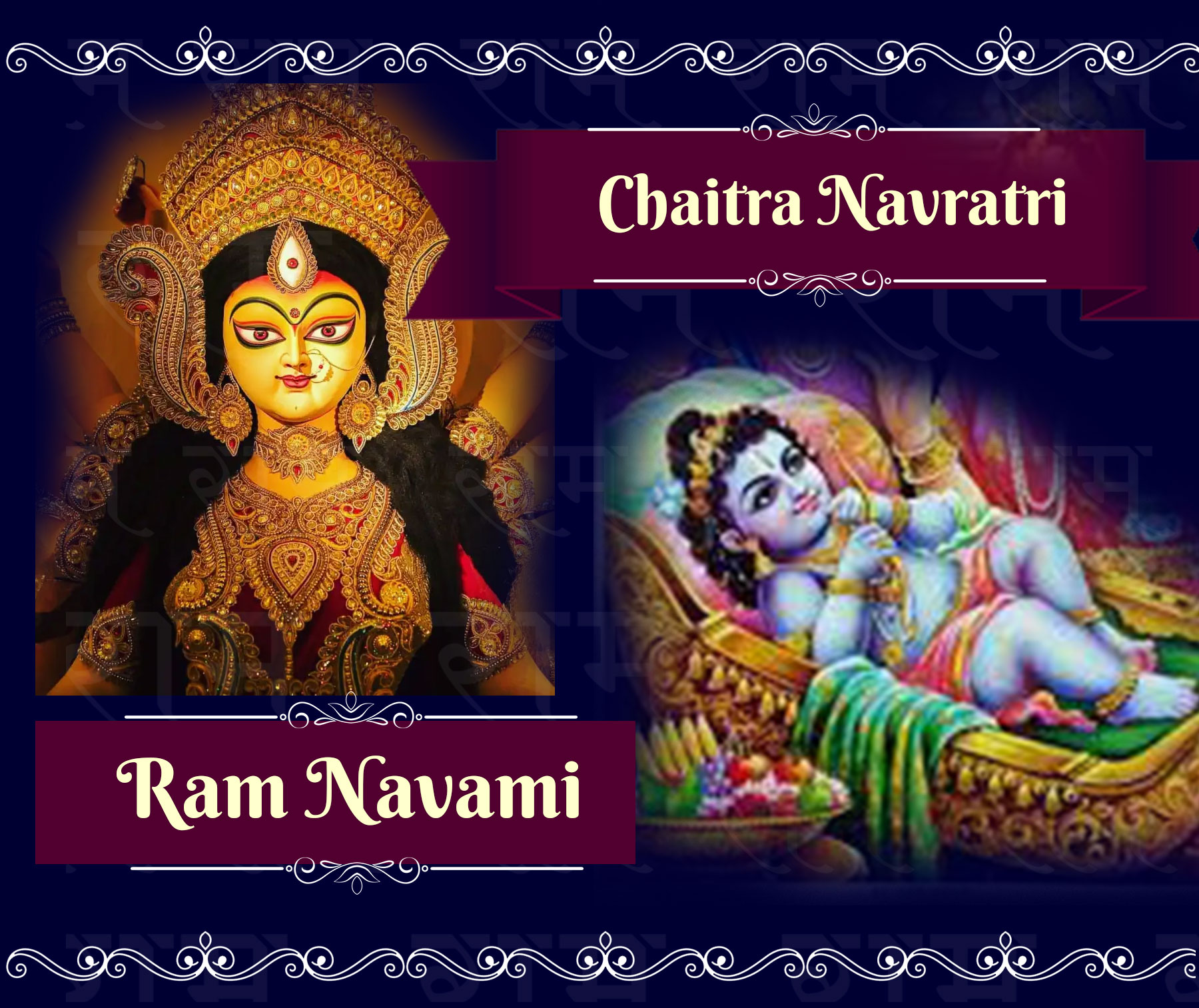
Chaitra Navratri & Ram Navami
Chaitra Navratri, a 9-day festival is marked by the first day of Hindu lunar calendar. It celebrates the nine avatars or incarnations of Mother Durga who slayed the evil demon Mahishasura. The celebration symbolizes the victory of good over evil. Devotees worship Mother Durga for shakti or strength to fight the inner demons of the heart and to get rid of the evil that souls have harbored through endless lifetimes. In many parts of northern India, this festival is also referred to as Ram Navratri because Lord Ram descended on earth on the ninth day of Chaitra Navratri.
JKYog and Radha Krishna Temple of Dallas are very proud to present a 10-day program of festivities from April 1 to 10, 2022. It will include daily Durga Maa Poojas, 108 Deep Daans, Mata Ki Chowki and Durga Ashtami Havan. The program will culminate with a grand celebration of Ram Janm, cake cutting, cultural program and Swamiji’s Lecture on Ram leelas. Devotees can participate in person or virtually. Check out the website to know more about seva opportunities and the schedule for specific events.

Voices from the Global Community
Typically, we introduce you to a member of our global community who has been impacted by the scriptural knowledge as taught and disseminated by Swamiji through a video testimony. This time we present something different. Two devotees, Raghavan Murugan and Tejal Jasani, describe how their spiritual goal changed from Mukti to Bhakti, influenced by Swamiji’s teachings.
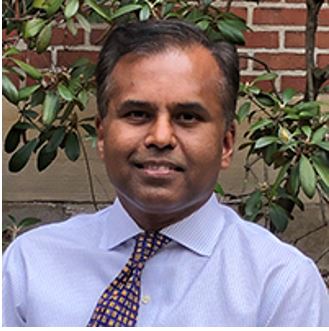

We invite you to share your inspirations and success stories with us at secretary@jkyog.org.

Glimpses of Past Events
Want a glimpse of some of our events? This month we share beautiful glimpses of two JKYog events.


